Source: https://www.gia.edu/aquamarine-quality-factor
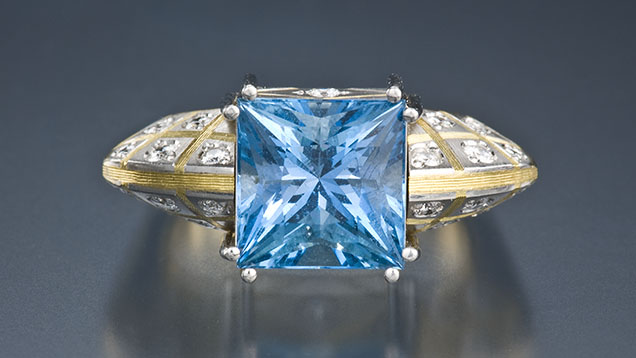
In the commercial market, aquamarine competes with treated blue topaz for attention, but fine aquamarine sells for far more than equivalent-quality treated blue topaz.
Color
Aquamarine’s color range is very narrow: It can be blue, very slightly greenish blue, greenish blue, very strongly greenish blue, or green-blue. The gem’s most valuable color is a dark blue to slightly greenish blue with moderately strong intensity. In general, the purer and more intense the blue color, the more valuable the stone. Most aquamarine is a light greenish blue.

Although some buyers prefer the more greenish natural color, most of the aquamarine in the market was heat-treated to give it more of a pure blue.
Fashioned aquamarines often have to be fairly large—generally over 5 carats—to show intense, dark color. Although small gems are rarely saturated enough to be attractive, stones from some mines in Africa—Nigeria, Madagascar, and Mozambique, for example—are known for intense color in sizes under 5 carats. For this reason, smaller, top-color stones might sell for more per carat than larger stones of the same color.
Clarity
Most faceted aquamarines are eye-clean. Some crystals might contain liquid inclusions, but clarity characteristics are few or absent in most finished gems. Stones with eye-visible inclusions are usually fashioned into cabochons, beads, or carvings.
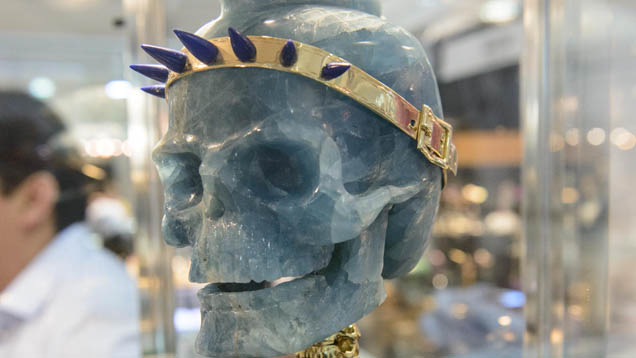
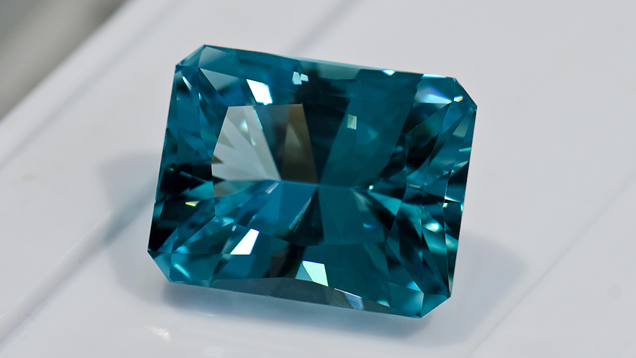
In some beryl crystals, there are enough parallel inclusions—usually long hollow or liquid-filled tubes—to allow cutters to fashion the rough to show a cat’s-eye.

Cut
Aquamarines can be cut into almost any shape, but cutters often fashion them as emerald cuts or as round or oval brilliants. The rough is fairly plentiful, so well-cut stones are fairly common. The gemstone’s hardness and transparency make it popular with designers, artists, and carvers. Gem sculptors use aquamarine for fantasy cuts and ornamental objects.
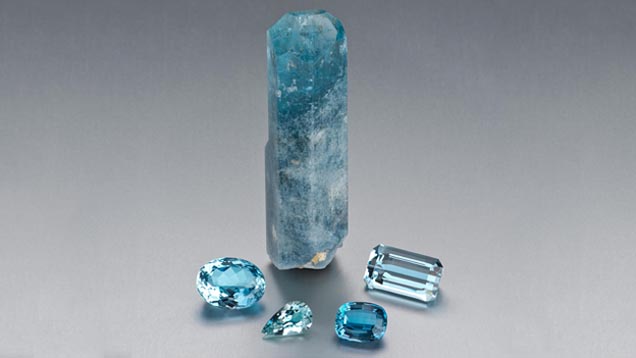
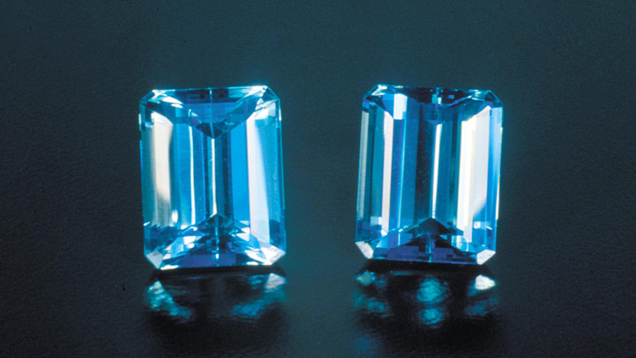
The gem is pleochroic, which means it shows different colors in different crystal directions—in the case of aquamarine, they’re near-colorless and strong blue. Fortunately, the blue pleochroic color corresponds with the cutting orientation that retains the most weight, with the table facet aligned parallel to the length of the crystal.
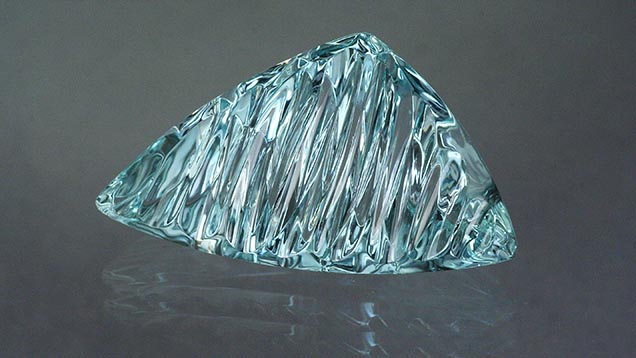

Carat Weight
Aquamarine crystals come in sizes from very small to very large—some even up to 100 lbs. (45 kg). While large stones are readily available, it’s difficult to use them in jewelry, so there’s less demand for them, except as center stones. As a result, per-carat prices tend to decrease for sizes above 25 carats.
Many very large aquamarine crystals have been discovered. The largest Brazilian aquamarine on record was found in 1910, in Minas Gerais, Brazil. It weighed 244 lbs. (110 kg) and measured 19 in. (48 cm) long and 15 in. (38 cm) in diameter.

